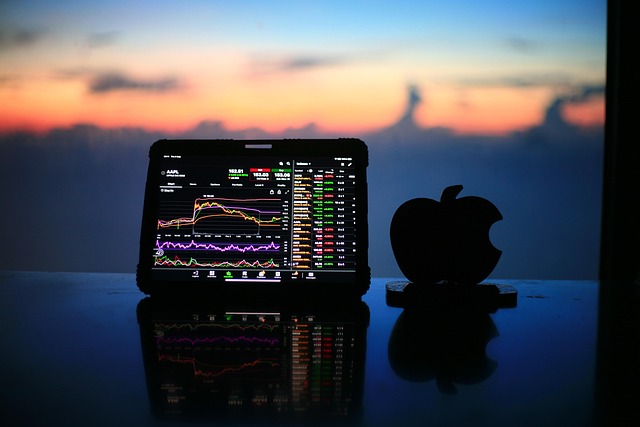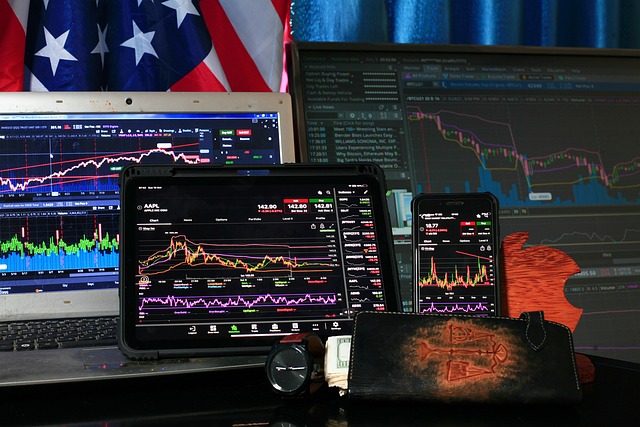Crypto Trading Signals Free: Ultimate Guide
Author: Jameson Richman Expert
Published On: 2025-10-28
Prepared by Jameson Richman and our team of experts with over a decade of experience in cryptocurrency and digital asset analysis. Learn more about us.
Crypto trading signals free are an increasingly popular resource for traders who want trade ideas without paying subscription fees. This comprehensive guide explains what free crypto trading signals are, how they are generated, how to evaluate and use them safely, and practical steps to integrate them into a trading plan — with examples, tools, and trusted resources so you can start testing signals with confidence.

What are crypto trading signals?
Crypto trading signals are explicit trade suggestions that typically include an asset, entry price, stop-loss, take-profit targets, and sometimes a time horizon and confidence score. Signals can be delivered manually by analysts, automatically by algorithms, or via hybrid services. Free signals provide these trade ideas at no monetary cost, but they vary widely in quality and transparency.
- Manual signals: Created by analysts or experienced traders who publish their setups on Telegram, Twitter/X, Discord, or blogs.
- Automated signals: Generated by bots or algorithms based on technical indicators, pattern recognition, or on-chain metrics.
- Hybrid signals: Algorithms that are reviewed and adjusted by human traders before distribution.
How signals are typically represented
Standard information you should expect from a quality signal:
- Asset / trading pair (e.g., ETH/USDT)
- Suggested entry price or zone
- Stop-loss level
- One or more take-profit targets
- Timeframe/context (scalp, intraday, swing)
- Rationale or indicator used (e.g., RSI divergence, moving average crossover)
How crypto trading signals are generated
Signals come from a mix of technical analysis, on-chain metrics, market sentiment, and fundamental analysis:
- Technical analysis (TA): Uses indicators like moving averages, RSI, MACD, Fibonacci levels or price patterns. Read more about technical analysis on Wikipedia.
- On-chain analysis: For cryptocurrencies, metrics such as exchange inflows/outflows, active addresses, and large wallet movements are useful.
- Fundamental drivers: News, upgrades, regulatory events, or macro factors can produce signals or validate technical setups.
- Machine learning and quantitative models: These generate automated signals by backtesting indicator combinations or using statistical features.
Why consider free crypto trading signals?
Free signals are attractive for beginners and cost-conscious traders because they lower the barrier to entry and allow you to test strategies without financial commitment. Benefits and limitations include:
Benefits
- Cost-free access to trade ideas so you can learn market structure and signal formats.
- Opportunity to build and test a signal-following process before committing to paid services.
- Exposure to diverse strategies — short-term scalps, swing trades, or long-term positions.
Limitations and risks
- Quality varies considerably; many free channels lack verified track records.
- Signals are often generic and don’t fit your personal risk profile or portfolio.
- Delayed delivery in free channels (lag) reduces effectiveness versus paid, real-time services.
- Some free groups exist to funnel users into paid upsells or paid Telegram tiers.

How to evaluate free crypto trading signals
Not all free signals are equal. Use a checklist to separate useful sources from noise:
- Transparency and track record: Does the provider publish past performance with timestamps and real trade results? Beware unverifiable claims.
- Signal completeness: Are entry, stop-loss, and take-profit clearly stated?
- Rationale provided: High-quality providers explain the setup and indicators used.
- Risk management emphasis: Do they specify position sizing or risk % per trade?
- Independent reviews: Look for third-party reviews or forum discussions on Reddit, TradingView, or other public boards.
- Community and moderation: Moderated groups with clear rules and archived signals are preferable.
For examples of in-depth analysis and signal-style commentary on specific coins, read articles such as this assessment of Ethereum’s future growth and market potential (useful for validating long-term signals): Cathie Wood Ethereum price prediction — in-depth analysis.
Top free sources and tools for crypto trading signals
Below are common free sources along with how to use them responsibly.
1) Public channels and communities
Telegram, Discord, and Reddit provide fast distribution. However, popularity does not equal quality. Look for channels that post full trade histories and analyze both winners and losers.
2) TradingView ideas
TradingView users publish chart-based trade ideas that often include entries and targets. You can filter by author reputation and view charts directly on the platform: TradingView.
3) Free automated signals and bots
Some platforms offer free bot strategies or community-shared algorithms. When integrating bots, backtest extensively and use paper trading first. For a well-researched review of trading bots and how they perform in practice, check this expert analysis that assembled community insights: Best crypto trading bot — Reddit review and expert analysis.
4) News aggregators and sentiment sites
Real-time news can function as a signal trigger for volatile moves. For guidance on reliable news resources and how traders should use news, see this review of crypto news websites: What is the best crypto news website for traders?. For fundamentals and credibility, use recognized resources like Wikipedia’s overview of cryptocurrencies and reputable market news outlets.
5) Free strategy guides and educational PDFs
Structured learning helps you interpret signals properly. You can expand your signal knowledge with downloadable strategy guides — for example, a free PDF guide covering common crypto trading strategies and signal usage: Crypto trading strategies PDF — free download.
Example: Using a free signal — step-by-step
Here’s a practical example to show how a quality free signal should be used, from evaluation to execution and trade management.
Signal (example)
- Asset: ETH/USDT
- Entry: 1,800–1,820 USDT
- Stop-loss: 1,740 USDT
- Take-profit 1: 1,920 USDT
- Take-profit 2: 2,060 USDT
- Timeframe: Swing (days to weeks)
- Rationale: Break of descending trendline + MACD bullish crossover
Applying risk management
If your account equity is $10,000 and you risk 1% per trade, your monetary risk is $100. The stop-loss distance from entry is (1820 − 1740) = $80 per unit. Position size formula: position size = risk / stop distance = 100 / 80 = 1.25 ETH. Round down for slippage and liquidity; maybe take 1 ETH to maintain a safer buffer.
Execution and trade management
- Place limit orders if you want targeted entries; otherwise use market entry but account for slippage.
- Set stop-loss as a stop-limit order or an exchange stop to avoid emotional mistakes.
- Scale out at TP1 and TP2 to lock profits and reduce risk.
- Monitor news and on-chain activity that could invalidate the signal.

Integrating free signals into your trading strategy
Signals should be inputs into your broader trading plan, not authoritative directives. Here’s how to integrate them safely.
1) Backtest and paper trade first
Collect historical signals (or generate your own from a provider) and test them on past data. Use paper trading on platforms like TradingView or exchange testnets to validate signal effectiveness without risking capital.
2) Combine signals with your favorite indicators
Use a confirmation rule: follow free signals only when one or two of your trusted indicators agree with the setup — for example, a signal plus RSI above 50 or price above a key moving average.
3) Use proper position sizing
Never risk more than you can afford to lose on any single signal. Many professionals risk 0.5%–2% of account equity per trade depending on setup quality and overall strategy.
4) Keep a trade journal
Track each signal you follow with entry/exit, rationale, and outcome. Over time you will see which signal sources and trade types are profitable and which are noise.
5) Use bots for execution where appropriate
If you want to automate following signals, combine verified signals with a trading bot that executes orders and enforces stop-losses. A careful review of bots and community experiences helps; see the bot analysis referenced earlier: best crypto trading bot — Reddit review.
Where to execute trades (recommended exchanges)
When you decide to act on a free signal, choose a reputable exchange with sufficient liquidity for your trades. Below are commonly used global crypto exchanges; register links are provided for convenience (use region-appropriate options and follow local compliance rules):
- Binance — global liquidity and range of products: Register on Binance.
- MEXC — supports many altcoins and spot/derivatives markets: Register on MEXC.
- Bitget — popular for derivatives and copy trading: Register on Bitget.
- Bybit — established derivatives exchange with advanced order options: Register on Bybit.
Tools to verify and track free signals
Verify claims and track performance with tools and simple processes:
- Spreadsheet logging: Maintain a Google Sheet with time-stamped entries, outcomes, and screenshots of the original signal.
- Public dashboards: Some providers use third-party trackers like Myfxbook-style tools for crypto. If a provider publishes a public performance link, verify timestamps and trades.
- Alert systems: Set alerts in TradingView for price zones mentioned in the signal so you don't miss entries.
- Paper trading accounts: Use built-in paper trading on exchanges or TradingView to simulate execution.

Red flags and scams to avoid
Free signal groups sometimes serve as a funnel to paid scams or pump-and-dump schemes. Watch out for:
- Channels that only broadcast entry information without stops — this encourages emotional averaging down.
- Pressure to deposit or pay immediately to “unlock” better signals.
- Unverifiable track records with screenshots that could be fabricated.
- Signals paired with small illiquid altcoins where leaders might be coordinating moves.
- Providers promising guaranteed high returns — no legitimate trader guarantees profit.
Practical workflow for a beginner using free signals
- Subscribe to a handful of reputable free signal providers and public TradingView authors.
- Paper trade the signals for 30–90 days and log results in a spreadsheet.
- Develop filter rules (e.g., only take signals that align with your indicators or only for assets with >$50M market cap).
- Start small with real capital (1–2% of strategy capital) once comfortable with the live performance.
- Scale only after you verify consistent sustainable performance and that your psychology holds up with real risk.
Advanced tips: combining signals with macro and fundamental research
Signals often work best when used with context. For example:
- Use on-chain flows and major holder behavior to confirm breakout signals in altcoins.
- Combine macro indicators (USD strength, interest rate news) with technical signals to avoid trades in adverse macro conditions.
- Monitor key development updates for major protocols — read in-depth analyses and long-term outlooks to complement short-term signals. (Example: deep dives like the Ethereum future-growth analysis linked above can help you decide whether to treat ETH setups as trade or investment opportunities.)

Frequently asked questions (FAQ)
Are free crypto trading signals reliable?
Some are, many aren’t. Reliability depends on source transparency, track record, and alignment with your risk profile. Treat free signals as educational or exploratory inputs, and always paper trade before risking capital.
Can I automate free signals with trading bots?
Yes. Free signals can be fed into automation systems, but you must verify the timing and formatting to avoid execution errors. Consider reading community bot analyses to select reputable automation approaches: best crypto trading bot — review and analysis.
Do I need to use leverage with signals?
No. Leverage amplifies both gains and losses and should only be used by experienced traders with strict risk management rules.
How many free signal sources should I follow?
Quality over quantity. Start with 2–4 trusted sources, test, and expand only if each additional source adds unique value (e.g., on-chain perspective, macro news, or a different timeframe).
Reliable extra reading and references
For broader reading and to improve your signal interpretation skills, consult reputable educational resources such as:
- Investopedia — Trading signals (definition and basics)
- Wikipedia — Cryptocurrency (background and fundamentals)
- TradingView (charts, published ideas, alerts)
Additional helpful reads available on analysis and strategy at CryptoTradeSignals Live include:
- In-depth Ethereum price prediction and market potential
- Comprehensive trading bot review and Reddit insights
- Best crypto news websites for traders and investors
- Free downloadable crypto trading strategies guide (PDF)
Conclusion — how to make the most of crypto trading signals free
Free crypto trading signals can accelerate your learning and provide useful trade ideas if you apply rigorous verification, strong risk management, and a disciplined workflow. Treat signals as inputs—not instructions—combine them with your own analysis, paper trade to build confidence, and only scale live capital after a verified edge is proven. Use trusted exchanges for execution and keep improving via journaling and backtesting.
Start small, protect capital with strict stops and position sizing, and use the links and resources above to deepen your knowledge. If you’re ready to try live trading after testing, consider registering at reputable exchanges to execute signals reliably: Binance (register), MEXC (register), Bitget (register), and Bybit (register).
Good luck, trade responsibly, and keep learning — the right combination of reliable signals, disciplined risk management, and continuous improvement is the path to consistent results.